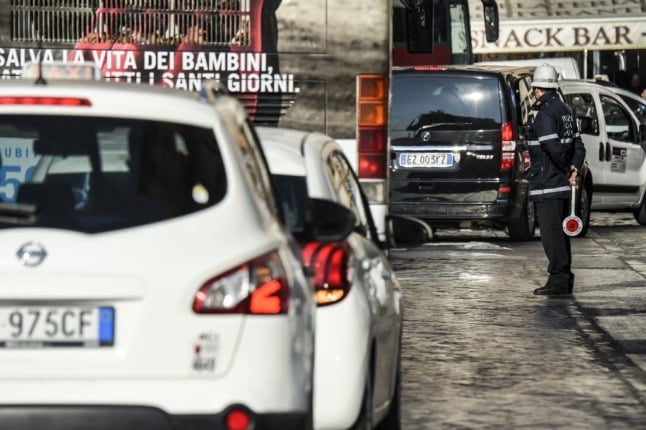The other week, I almost hit a kid with our car.
A boy stepped out onto the icy crosswalk from behind an (illegally parked) car. He was probably about nine years old, no doubt was late for school and in another world that did not include neighbourhood traffic.
This happened as I was driving along the narrow, winding streets of our neighbourhood early in the morning, something I try to avoid. Even after warming up the car for ten minutes, a layer of ice had still covered the inside of my windshield.
Note to self: due to the windshield’s curvature, scraping the inside results only in a mess, not visibility. I had finally cleared a reasonably large patch and proceeded, but my range of sight was still less than 100 percent.
It was only thanks to the fact that I was crawling along at the speed of about 10 km/hour that this boy didn’t end up in the hospital – or worse.
When we first moved to Sweden, my husband recommended that I start the process of getting my driver’s licence right away, while I still had free time to work on it.
He seemed to be treating the process with undue seriousness, but what could be so hard about getting a driver’s licence?
A lot, as it turns out.
The adventure began when I first checked out the “English” version of the driver’s education book from the library, which proved to be only marginally helpful.
From this book, I learned the following:
1) American English and British English have little vocabulary in common when it comes to driving terms, and;
2) Without some extra explanations for the foreign-born, a lot is lost in the translation.
This wasn’t working. I moved on to the Swedish version. It was a good choice: longer reading time, but, ironically, much easier to understand.
Done.
Now, for the practice test.
My most recent experience with a driver’s test was the renewal of my California licence a few years ago.
The woman at the counter told me then that my driver’s test had expired—I would have to take a written test.
Now, I hadn’t opened a driver’s education book since I was 15, and now I’m… quite a bit older than 15, but I managed to pass that test cold. Again, what could be so difficult?
My Swedish practice test didn’t go as smoothly. In fact, I failed miserably.
Here are some of the many questions I missed:
1. During which months is the risk for crashing into a wild animal the highest?
2. What is the maximum speed limit for a car with a trailer without brakes that weighs less than half the weight of your car? More than half? With brakes?
3. You panic and brake at 110 km/h on an icy road with a car without studded tires. About how far will your car travel until it comes to a stop?
The list goes on—65 questions long, in fact. To this day, I still can’t figure out the answer to that last one.
After the miserable failure of my practice test, I was in denial.
Why did I, with my clean driving record and more than 20 years of experience under my belt, need to spend thousands of kronor and what seemed to be thousands of hours working on a driving test?
Maybe there was some way out of this process. After all, why should the Brits get to exchange their licences and not the North Americans—the Brits drive on the other side of the road, which sounds like a red flag to me.
I did a little research. I could move to Japan first and exchanging my US licence there, but I calculate this as more expensive and time consuming than just taking the course. And, by the way, doesn’t Japan also drive on the left?
There doesn’t seem to be a back door.
But here’s what I do find on Wikipedia during my research:
*Sweden: 2.9 road fatalities per 100,000 per year
*US: 12.3
*UK: 3.6
So maybe the Brits are more deserving of a free pass on the driving test.
But it’s Sweden that really shines here. In fact, it turns out that we’re living in the second safest nation in the world when it comes to cars, following only the Marshall Islands.
They must be doing something right.
This prompts me to calculate the number of people I knew personally who have died in a car crash: three fatal car accidents at my high school, three at the high school where I taught.
That’s an awful lot of parents who have lost their kids.
The research proves to be sobering. Briefly, I contemplate taking the eco-friendly path and just not driving anymore.
I know quite a few adults here in Sweden who don’t drive at all. In contrast, after thirty-five years in the US, I had met only one adult who didn’t have her licence.
She was Swedish.
But my US self tells me I need my licence.
Resigned to my fate, I follow a tip from another American and sign up for one session of driving practice. Why on earth I need to pay someone to watch me drive is beyond me, but I trust her… and she passed her driver’s test on the first try.
I had read up about some of the common driving test pitfalls, so I make a big deal about checking my rear-view mirror, signaling for every turn and yielding to cars coming from the right.
The session ends without incident, and I’m feeling pretty good.
My driving coach’s assessment? Fail. I speed. All the time.
And that’s entirely true.
I’m not speeding by much— I’m a mother with a station wagon, after all—but more often than not, that speedometer needle hovers over, not under, the limit.
After years of US driving, I’ve come to see the number on the sign post not as a limit but as a general recommendation, as if the rulebook says, “Just stay reasonably close to the number on the sign and we won’t bother you.”
My driving coach does not share this view. Speeding, I am informed, is a traffic violation, one that warrants immediate failure of my test. Maybe I do need a little more practice.
I spend the next few weeks trying to never speed, which, like everything else in the process, turns out to be harder than I expected. My internal gauge of speed has to be reset, this takes some serious concentration.
A few months later, I’m finally ready for the test, just in time for the one-year expiration of my American licence.
But in addition to earning my licence, it turns out that a year of preparing for the test has changed me as a driver.
The other week, on that chilly morning in my car, I was not going anywhere near the 30km/hour speed limit, and as I approached the crosswalk, my foot dutifully hovered over the brake. It was the difference between a close call and hitting a child, and this made the whole driver’s licence process feel worthwhile.
As a parent, I am grateful to live in a nation where the streets are safer, and I can’t help thinking that the driver’s licence process is a part of that.
On one hand, there’s something very un-Swedish about the high cost of getting a licence, making money a gate-keeper in a society that disdains classism.
Still, raising the bar for the privilege of steering two tons of metal down streets full of kids now seems like an obvious move.
Because that kid absent-mindedly crossing the street could have easily been my own.
Rebecca Ahlfeldt is an American ex-pat writer, translator and editor currently based in Stockholm.



 Please whitelist us to continue reading.
Please whitelist us to continue reading.
Member comments